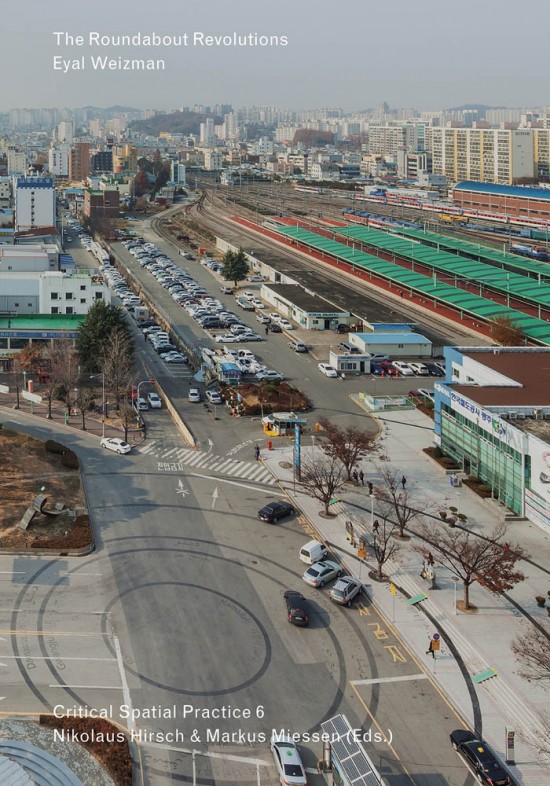Eyal Weizman: The Roundabout Revolutions

British-Israeli architect and researcher Eyal Weizman’s book “The Roundabout Revolutions” is dedicated to the fact that many recent revolutions have taken place on roundabouts. In an inversion of their intended function[2], roundabouts in Gwangju, South Korea (1980), the main roundabout in Tunis (2011), Dowar al-Lulu (Pearl Roundabout) in Manam, Bahrain (2011), al-Manana Square in Rhamallah (at different times), Azadi Square in Tehran (2009)[3] have allowed for people to gather, not disperse, to observe outward, rather than being put under surveillance from an outside (an “inverted panopticon”[4]).
He concludes his book with a chapter on the Polish Round Table, which he calls “ a script and a diagram of new power relations”.
[1] Eyal Weizman, Blake Fisher, and Samaneh Moafi, The Roundabout Revolutions, Critical Spatial Practice 6 (Berlin: Sternberg Press, 2015).
[2] Weizman, 19.
[3] Weizman, 11.
[4] Weizman, 44.